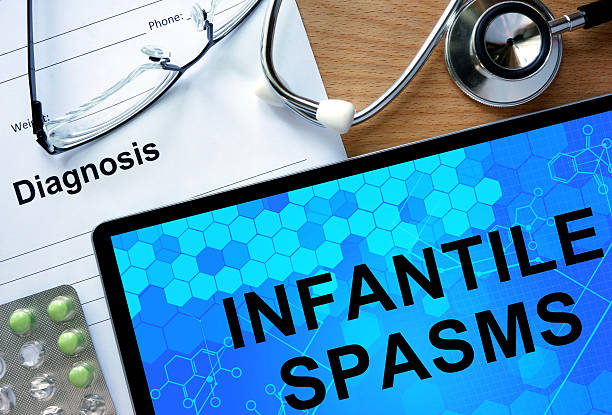Normal pressure hydrocephalus (NPH) is a condition characterized by an excess of a particular type of fluid in a specific brain area. The brain and spinal cord are enveloped in cerebrospinal fluid (CSF), a clear liquid vital for cushioning, nourishing, and removing waste from these organs. This fluid is produced and stored in ventricles within the brain, circulating through them to fulfill its functions. Usually, any excess cerebrospinal fluid (CSF) is removed and absorbed by veins located near the upper part of the brain
However, in hydrocephalus, this natural drainage system malfunctions, leading to an accumulation of CSF. As a result, the ventricles expand to accommodate the excess fluid, exerting pressure on the surrounding brain tissue and causing various symptoms. Hydrocephalus can stem from various causes, including congenital factors or acquired conditions throughout life.
NPH, a specific form of hydrocephalus, typically manifests in older adults, with the average onset occurring after the age of 60. Unlike other types of hydrocephalus, NPH progresses slowly over time. The buildup of CSF occurs gradually, and while the pressure within the brain may not rise significantly, the enlarged ventricles still impact brain function. This condition predominantly affects brain regions responsible for motor control, bladder function, and cognitive processes like memory and reasoning, often leading to symptoms resembling dementia.
The symptoms of NPH can resemble those of Alzheimer’s disease or Parkinson’s disease, which can sometimes lead to misdiagnosis. However, unlike these conditions, NPH can often be reversed with appropriate treatment if accurately identified.
Causes of Normal Pressure Hydrocephalus
The exact cause of Normal Pressure Hydrocephalus (NPH) remains largely unknown, although several factors can contribute to its development, including:
- Head injury
- Brain bleeding resulting from a head trauma
- Stroke
- Meningitis is an infection affecting the brain’s protective layers
- Brain tumor
- Previous brain surgery
However, the precise mechanism by which these conditions lead to NPH is not fully understood.
Symptoms
Initially, the symptoms of NPH are subtle and progress gradually over time. These symptoms may include manifestations of dementia, such as:
- Memory loss
- Speech difficulties
- Apathy and withdrawal
- Changes in behavior or mood
- Problems with reasoning, attention, or judgment
Additionally, individuals with NPH may experience various walking difficulties, including:
- Unsteadiness
- Weakness in the legs
- Sudden falls
- Shuffling steps
- Difficulty initiating movement, as if feet were stuck to the ground
- “Freezing” or becoming immobile while walking
Urinary symptoms are also common, such as:
- Incontinence (inability to control urine)
- Bowel incontinence (less common)
- Frequent urination
- Urgency to urinate
Furthermore, symptoms associated with increased pressure in the brain may occur, including:
- Headaches
- Nausea
- Difficulty focusing the eyes
It’s essential to recognize that these symptoms, including memory loss, difficulty with speech or walking, and urinary problems, are not necessarily the typical signs of aging. Instead, they could indicate underlying and treatable conditions. Therefore, any changes in mood, behavior, or physical function warrant a prompt visit to a healthcare provider for evaluation and appropriate management.
Normal pressure hydrocephalus (NPH) diagnosis
Distinguishing normal pressure hydrocephalus (NPH) from conditions like Alzheimer’s disease or Parkinson’s disease is crucial due to their differing treatments. Although no lab test can definitively diagnose NPH, various diagnostic procedures are available.
Your healthcare provider may refer you to a neurologist or neurosurgeon for a comprehensive evaluation. This typically begins with a thorough medical interview, discussing your symptoms, medical history, family history, medications, lifestyle, and habits. Following this, a detailed physical examination is conducted to assess your condition and rule out other potential disorders with similar symptoms.
The examination may include tests of your mental status to evaluate cognitive function, neuropsychological testing to assess dementia symptoms accurately, and lab tests to exclude other conditions. Additionally, imaging scans such as a CT scan or MRI of the head may be performed. While these scans can’t confirm NPH, they may reveal changes suggestive of the condition, such as ventricular enlargement. Advanced techniques may even measure the flow of cerebrospinal fluid (CSF) in the brain.
In some cases, more invasive procedures like cisternography or lumbar puncture (spinal tap) may be recommended. Cisternography highlights CSF absorption, while a lumbar puncture involves measuring CSF pressure and analyzing fluid for abnormalities. Sometimes, removing excess fluid during a lumbar puncture can temporarily alleviate symptoms, aiding in diagnosis. If the symptoms improve following fluid removal, surgical intervention, such as shunt placement, may be beneficial.
Treatment and Home Care for Normal Pressure Hydrocephalus:
Treatment for NPH often involves surgical intervention, although non-surgical management focuses on symptom relief and maximizing functioning.
Surgical options primarily entail the placement of a shunt, a thin tube implanted in the brain to divert excess CSF away from the brain to another part of the body. The shunt includes a valve that regulates fluid drainage based on pressure levels. While this procedure doesn’t address the underlying cause of NPH, it can alleviate symptoms. Endoscopic third ventriculostomy, an alternative surgical procedure, involves creating a small ventricle hole to facilitate CSF drainage.
Non-surgical management aims to address mood and behavioral issues, physical challenges like incontinence and walking difficulties, and overall well-being. Careful monitoring and adjustments to treatment may be necessary over time, especially as symptoms evolve.
Prevention and Outlook
There’s currently no known method to prevent NPH. Adopting a healthy lifestyle, including regular exercise and avoiding risk factors like smoking and head injuries, may help reduce the likelihood of conditions that can contribute to NPH.
NPH is a progressive condition, meaning symptoms worsen over time if left untreated. However, the outlook varies depending on individual factors and treatment responses. Some individuals experience significant improvement following surgery, while others may not be candidates or see limited benefits.
Regular follow-up appointments with healthcare providers are essential for monitoring symptoms and adjusting treatment when needed.
Support for Normal Pressure Hydrocephalus:
Coping with NPH can be challenging, affecting various aspects of life for both individuals and their families. Support groups can provide valuable assistance and coping strategies for managing the condition. These groups offer opportunities to connect with others facing similar challenges and share experiences.
To find a support group, individuals can contact organizations such as the Family Caregiver Alliance, the Hydrocephalus Association, the National Hydrocephalus Foundation, or the Hydrocephalus Support Group, Inc. These organizations assist with face-to-face gatherings, phone discussions, or virtual platforms, supplying important tools and a sense of togetherness for individuals impacted by NPH.

